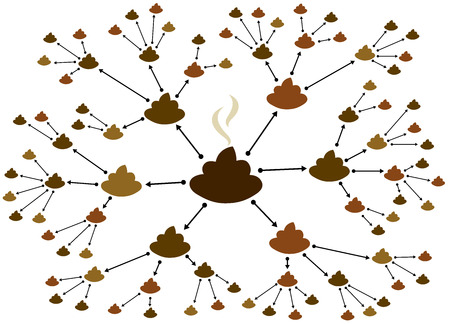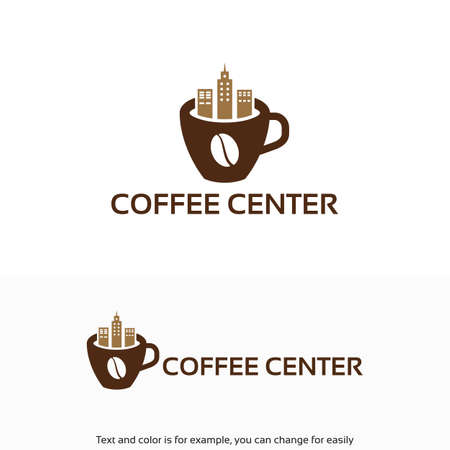Introduction to the Indian Coffee Scene
Coffee in India is more than just a drink—it’s a cultural experience that weaves together tradition and modernity. From the aromatic South Indian filter coffee served in steel tumblers to the chic, air-conditioned cafés lining urban streets, India’s coffee journey is as diverse as its people. Historically, coffee was introduced to India centuries ago in Karnataka, where lush estates still produce some of the world’s finest beans. Over time, coffee became synonymous with southern hospitality, with homes and local “kaapi” houses serving frothy brews prepared through traditional decoction methods. In recent years, however, India has seen a surge in café culture across metros like Bengaluru, Mumbai, and Delhi. The youth flock to trendy outlets not only for their caffeine fix but also as spaces for socialising, work, and creativity. This blend of heritage and innovation sets the stage for a vibrant coffee market—where foreign giants compete with passionate local startups to win the hearts (and taste buds) of Indian consumers.
2. Entry of Foreign Coffee Brands
When we talk about the Indian coffee scene, the entry of foreign brands has been nothing short of a brewing revolution. Global giants like Starbucks and Costa Coffee have entered the Indian market with calculated strategies, blending their international appeal with local sensibilities. Their arrival has not just brought in new flavours but also reshaped how Indians experience coffee outside their homes.
Adapting to Local Tastes
Unlike in the West, where black coffee or espresso might be the norm, India’s coffee culture is deeply rooted in sweet, milky concoctions like filter coffee. Understanding this, international brands have innovated their menus to include options that suit Indian palates. For example, Starbucks offers “Masala Chai Tea Latte” and “South Indian Filter Coffee” in select outlets, while Costa Coffee features local snacks alongside its classic coffees.
Key Strategies Used by International Coffee Chains
| Brand | Entry Year | Key Local Adaptations | Main Competitors |
|---|---|---|---|
| Starbucks | 2012 | Regional menu items, Indian coffee beans, localised store designs | Café Coffee Day, Barista, Blue Tokai |
| Costa Coffee | 2005 | Addition of Indian snacks, customisable sweetness levels, affordable combos | Café Coffee Day, Tata Starbucks, Third Wave Coffee Roasters |
The Desi Touch: Blending Global with Local
The hallmark of these foreign brands’ success lies in their ability to balance global standards with desi preferences. From store ambience inspired by Indian art to sourcing beans from estates in Karnataka and Tamil Nadu, every detail reflects an effort to connect with urban Indian youth and professionals. Loyalty programmes are often tailored for the digitally savvy Indian customer—think app-based rewards and cashless payments via UPI.
This adaptive approach has ensured that while the original brand identity remains intact, there’s enough familiarity for Indians to feel at home with every cup—making these international players formidable contenders in the growing Indian coffee market.

3. Rise of Local Indian Coffee Startups
In the last decade, India has seen a dramatic transformation in its coffee culture, and much of this change can be attributed to the surge of local startups such as Blue Tokai, Third Wave Coffee, and others. These homegrown brands have not only challenged the dominance of foreign players but have also brought a uniquely Indian touch to every cup served.
Bean-Sourcing with a Conscience
What sets these Indian startups apart is their commitment to ethical sourcing. Brands like Blue Tokai and Third Wave Coffee work directly with Indian coffee farmers, often from estates in Karnataka, Tamil Nadu, and Kerala. By cutting out middlemen and paying fair prices, they ensure that the growers receive their due share. This direct-trade model resonates strongly with urban Indian consumers who are increasingly conscious about sustainability and social impact.
Blending Tradition with Modern Techniques
Indian startups are not just about business—they’re about storytelling. While traditional South Indian filter coffee remains close to many hearts, these new-age cafes experiment by blending classic recipes with modern brewing techniques such as pour-over, AeroPress, and cold brew. For example, Blue Tokai offers single-origin brews alongside their signature South Indian filter blends, giving customers both nostalgia and novelty in every sip.
Local Flavours, Global Standards
Perhaps the most remarkable aspect of these startups is their ability to maintain global quality standards while celebrating local flavours. Third Wave Coffee’s menu includes everything from robust Malabar Monsoon beans to innovative drinks like spiced cold brews inspired by masala chai. By leveraging India’s rich agricultural diversity and infusing it with international café trends, these local brands are redefining what it means to enjoy coffee in India.
This rise of local startups demonstrates that Indian consumers are eager for authentic experiences rooted in their own soil—literally and metaphorically—challenging foreign brands to keep up with rapidly evolving tastes.
Cultural Adaptations and Consumer Preferences
India’s coffee market is unique, shaped by centuries of tea-drinking culture and an increasing appetite for global café experiences. Both foreign coffee brands and local startups recognise that success depends on how well they adapt to Indian tastes, which are distinctively bold, spicy, and often intertwined with tradition. Instead of simply importing Western menus, these brands innovate to resonate with Indian consumers’ preferences.
For example, while international chains like Starbucks and Costa Coffee offer classic espresso-based beverages such as cappuccinos and Americanos, they also feature India-specific drinks. The introduction of masala chai lattes, filter kaapi (South Indian-style filter coffee), and even turmeric-infused concoctions shows their willingness to blend global trends with local flavors.
Local startups go further by curating menus that feel familiar yet trendy. Many cafes in Bengaluru or Mumbai serve a fusion of traditional Indian drinks—like elaichi chai (cardamom tea), cold coffee with jaggery syrup, or spiced affogato—alongside contemporary options. This hybrid approach creates a space where customers can enjoy the comfort of homegrown flavors without missing out on the cosmopolitan café experience.
Popular Beverage Adaptations: A Comparative Table
| Beverage Category | Foreign Brands | Local Startups |
|---|---|---|
| Classic Espresso Drinks | Cappuccino, Latte, Americano | Cappuccino, Latte with Indian twists (e.g., cardamom latte) |
| Tea-Based Innovations | Masala Chai Latte, Iced Chai Tea | Elaichi Chai, Ginger Masala Tea, Cutting Chai |
| Traditional Indian Coffee | Filter Kaapi (select outlets) | Filter Kaapi, Cold Coffee with Jaggery, Spiced Affogato |
| Health & Fusion Drinks | Turmeric Latte (Haldi Doodh) | Saffron Milkshake, Coconut-Jaggery Coffee |
Understanding the Indian Palate
The average Indian consumer often prefers beverages that balance sweetness and spice. For instance, masala chai—rich in ginger, cardamom, cinnamon—is a daily staple for millions. Recognising this preference, both foreign brands and local startups craft drinks that evoke nostalgia yet feel excitingly new.
Catering Beyond Beverages
Cultural adaptation extends beyond the cup. Cafés design their interiors to reflect local aesthetics—think hand-painted murals or rustic wooden seating. Menus often feature snacks like samosas or vada pav alongside croissants and muffins. This holistic approach ensures customers feel at home whether they’re ordering an Italian espresso or a steaming cup of adrak chai.
5. Price, Accessibility, and Coffee Experience
When discussing the growing Indian coffee market, one cannot ignore the impact of price, accessibility, and the overall experience—factors deeply rooted in both global chains and desi startups.
Affordability: For Every Wallet
International coffee brands such as Starbucks and Costa Coffee often cater to urban consumers who don’t mind spending a premium for their cup. Their menu prices are usually higher, making them a symbol of aspiration among young professionals and students in metros like Mumbai, Bengaluru, and Delhi. In contrast, local startups like Third Wave Coffee Roasters or Blue Tokai offer a broader pricing spectrum. Some even provide “filter kaapi” at pocket-friendly rates, ensuring that college-goers and office folks can enjoy specialty brews without breaking the bank.
Reach: From Metros to Tier-2 Towns
Global brands are mostly concentrated in big cities and luxury malls, which sometimes limits their accessibility for everyday Indians. On the other hand, homegrown chains have rapidly expanded into tier-2 and tier-3 cities, setting up outlets in busy markets, tech parks, and even railway stations. This wider reach is helping democratise the coffee culture across India.
Ambience & The Indian ‘Adda’ Culture
The ambience in foreign cafes often focuses on minimalistic designs with global playlists and plush seating—ideal for solo work sessions or formal meetings. However, local startups infuse their spaces with familiar elements: Bollywood posters, regional music, quirky Indian decor, and communal tables. More importantly, these cafes nurture the traditional Indian concept of ‘adda’—a place to hang out with friends over long conversations and endless cups of coffee. Such an environment resonates strongly with Indian youth who value connection over just caffeine.
In summary, while international giants bring global standards and aspirational experiences to the table, Indian startups are winning hearts by blending affordability, accessibility, and the warmth of adda culture—making every cup not just a beverage but an experience rooted in local sensibilities.
6. Challenges and Opportunities
The Indian coffee market, while brimming with potential, also presents a unique set of challenges for both foreign brands and local startups.
Scalability in a Diverse Market
India’s vast geography and cultural diversity make scaling up operations a tough nut to crack. Foreign brands like Starbucks often face hurdles in adapting their global models to suit regional preferences and price points. Local startups, on the other hand, struggle with limited resources and must innovate to reach customers beyond urban metros, especially in Tier 2 and Tier 3 cities.
Supply Chain Complexities
The journey from bean to cup in India is far from straightforward. Small-scale growers, unpredictable weather, and fragmented logistics create bottlenecks. While multinational brands can invest in robust supply chains, homegrown ventures frequently collaborate directly with farmers to ensure traceability and fair pricing. This hand-in-hand approach not only strengthens relationships but also brings fresher coffee to consumers—something that resonates strongly with India’s emerging artisanal coffee community.
Evolving Consumer Tastes
Traditionally, Indians have preferred tea or instant coffee, but urban millennials are driving a shift towards specialty brews and café culture. Both foreign giants and indie startups must continuously experiment with flavours, brewing techniques, and experiences to win over this evolving palate. Customisation—think filter kaapi meets cold brew—has become a winning formula for those who listen closely to local tastes.
Opportunities for Growth
The rise of digital platforms has enabled even small roasteries to reach niche audiences nationwide. There’s immense opportunity in tapping into rural markets as well; initiatives that educate farmers about specialty coffee cultivation or engage rural youth as baristas create value at the grassroots level.
Rural Engagement: A Win-Win
For both foreign players seeking authenticity and local startups craving scale, partnering with rural communities can be transformative. By investing in skill development and sustainable practices, brands foster loyalty while uplifting entire ecosystems—making every cup brewed in India part of a larger story of growth and inclusion.
7. Future Outlook of the Indian Coffee Market
As we brew up a hand-crafted forecast for India’s coffee journey, it’s clear that both foreign coffee giants and home-grown startups will continue to play vital roles in shaping the market’s trajectory. The coming years are likely to witness a dynamic interplay—a fine balance of rivalry and harmony—between these two forces.
Emerging Trends on the Horizon
India’s young, urban population is increasingly seeking premium experiences, which bodes well for foreign brands with global reputations and sophisticated café concepts. Meanwhile, local startups are quick to innovate, bringing regionally sourced beans, sustainable practices, and desi-inspired flavours into the limelight. Expect more collaborations, pop-up experiences, and hyperlocal branding as both camps strive to capture the attention of India’s evolving palate.
Technological Innovations Brewing Change
From app-based ordering to AI-driven roasting profiles, technology will further democratise access to high-quality coffee. Indian startups are poised to lead with creative tech integrations tailored for local tastes—think filter kaapi subscriptions, WhatsApp ordering, or traceable farm-to-cup supply chains. Foreign brands may bring in automation and global loyalty programs, setting new benchmarks for consistency and customer engagement.
Rivalry or Harmony? The Road Ahead
While competition between foreign brands and local startups is inevitable, there is also vast potential for synergy. Collaborations—such as international roasters sourcing Indian beans or joint ventures in specialty cafés—could elevate the entire ecosystem. Ultimately, this rivalry will fuel innovation, quality improvements, and greater consumer choice, making India’s coffee market one of the most exciting to watch globally.
The future promises a vibrant blend of global standards and Indian ingenuity—a symphony of taste where every cup tells a story shaped by both legacy and local flair.


